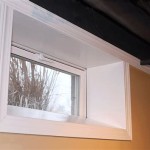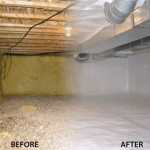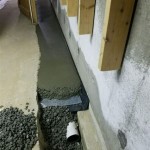How to Paint Poured Concrete Basement Walls
Painting poured concrete basement walls can significantly enhance the aesthetics and functionality of your basement. It can transform a drab and unfinished space into a bright and inviting area suitable for various purposes. The process involves several steps, from surface preparation to applying paint. This article will provide a comprehensive guide on painting poured concrete basement walls, covering essential steps and considerations for achieving a professional finish.
1. Prepare the Concrete Surface
Proper surface preparation is crucial for a durable and aesthetically pleasing paint job. Neglecting this step can lead to paint peeling, cracking, or uneven coverage. Here's how to prepare your concrete basement walls:
1.1 Clean the Surface
Start by removing any dirt, dust, cobwebs, and debris from the walls using a broom, vacuum cleaner, or a damp cloth. For stubborn stains, you can use a degreaser or trisodium phosphate (TSP) solution. Rinse thoroughly with clean water afterwards and allow the walls to dry completely.
1.2 Patch and Repair
Inspect the walls for cracks, holes, or uneven surfaces. Use a concrete patching compound to fill in any gaps or imperfections. Allow the patching compound to dry thoroughly before proceeding to the next step.
1.3 Prime the Walls
Priming is essential for creating a uniform surface and ensuring better adhesion of the paint. Choose a concrete primer specifically designed for basement applications. Apply the primer evenly using a roller or brush. Allow the primer to dry completely before painting.
2. Choose the Right Paint
Selecting the appropriate paint is crucial for achieving a long-lasting and aesthetically pleasing finish. Consider the following factors:
2.1 Moisture Resistance
Basements are prone to moisture and humidity, so it's important to choose a paint formulated for damp environments. Look for paints labeled as "moisture-resistant" or "alkali-resistant."
2.2 Durability
Concrete is a porous surface, so you need a durable paint that will resist abrasion and scratches. Select a paint with high-quality binders and pigments for superior durability.
2.3 Color and Finish
Choose a color that complements your basement's overall design and lighting conditions. You have a wide range of colors and finishes to choose from, including matte, satin, semi-gloss, and gloss.
3. Apply the Paint
Once the primer has dried, you can apply the paint. Follow these steps for a smooth and even finish:
3.1 Use a Roller
Rollers are ideal for covering large areas efficiently. Load the roller with paint, avoiding over saturation. Apply the paint in smooth, even strokes, overlapping each stroke by about 50%.
3.2 Use a Brush for Corners and Edges
Use a brush to apply paint to corners, edges, and hard-to-reach areas. Avoid using too much pressure, which can cause paint to drip or run.
3.3 Apply Multiple Coats
To achieve the desired color depth and coverage, apply multiple coats of paint. Allow each coat to dry completely before applying the next. The number of coats required will depend on the paint's coverage and the desired finish.
4. Maintain your Painted Walls
Once the paint is completely dry, clean the walls regularly to remove dust, dirt, and cobwebs. Avoid using harsh chemicals or abrasive cleaning agents that could damage the paint finish. If needed, you can touch up small scratches or chips with the original paint color.
:strip_icc()/102522989-0a65e22401704c578a80668b4f86a695.jpg?strip=all)
How To Paint Basement Walls

6 Best Paints For Concrete Basement Walls

How To Easily Add Knockdown Texture Concrete Basement Walls

Basement Finishing Do Not Paint Your Walls

Painting Poured Concrete Basement Walls Wall Diy

How To Easily Add Knockdown Texture Concrete Basement Walls

20 Clever And Cool Basement Wall Ideas

Stylish Solutions Covering Unfinished Basement Walls Csg Renovation

6 Best Paints For Concrete Basement Walls

How I Painted Faux Brick Walls In The Mancave
Related Posts







